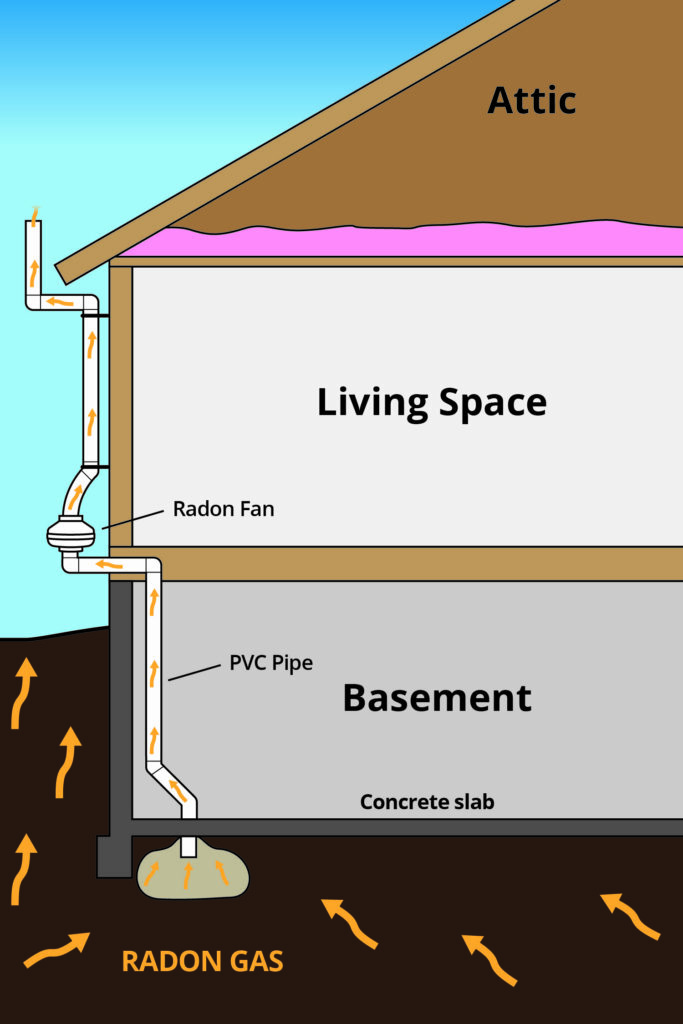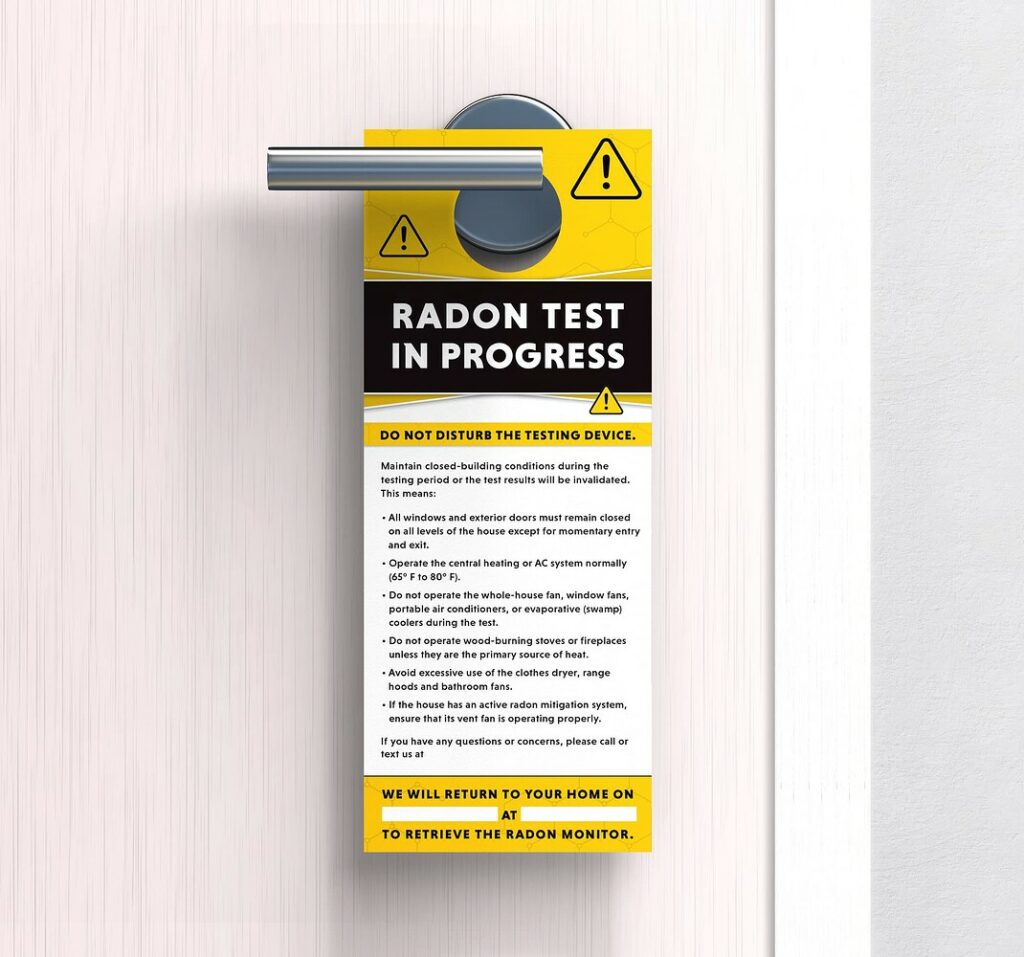If you’re buying a home with me I will always suggest you get a radon test. Often homebuyers have never heard of radon before and ask me lots of questions. I hope this post clears up the confusion.
Radon is a naturally occurring radioactive gas that comes from the breakdown of uranium in soil, rock, and water. You can’t see it, smell it, or taste it. And just because it’s natural, doesn’t mean it’s healthy. It can be harmful when it gets trapped inside our homes.
Radon gas seeps into homes through cracks in foundations, gaps around pipes, crawl spaces, or even well water in some cases. Once inside, it can accumulate to levels that pose a health risk, especially in lower areas like basements.
Why Do We Test for Radon?
The concern with radon is its link to lung cancer. According to the Environmental Protection Agency (EPA), radon is the second leading cause of lung cancer in the United States, right after smoking. In fact, the EPA estimates that radon causes about 21,000 lung cancer deaths per year.
Because you can’t detect radon without testing, it’s important to test any home you’re buying—regardless of age, location, or whether the house has a basement.
What Are the EPA Guidelines?
The EPA measures radon in picocuries per liter of air (pCi/L). Here’s what you need to know:
- 4.0 pCi/L or higher: The EPA recommends taking action to reduce radon levels.
- Between 2.0 and 4.0 pCi/L: Consider mitigation, especially if you spend a lot of time in the lower levels of the home.
- Below 2.0 pCi/L: Generally considered low risk.
Even if a home’s radon level is under 4.0, some buyers still choose to install mitigation systems as a precaution.
What’s the Radon Test Like?

Radon testing is simple and non-invasive. During a home inspection, the test is often performed by placing a small device in the lowest livable level of the home (usually the basement or ground floor). It stays there for 48 hours, measuring the average radon level in the air. Doors and windows are kept shut to try to trip as much radon as possible. After the 48 hour test, the results are read.
There are two types of radon tests:
- Short-term test: Most commonly used during real estate transactions. These tests take 48 hours and typically cost $125.
- Long-term test: Measures radon over 90 days or more and gives a better picture of year-round exposure. These are done by homeowners once they live in the home.
You can purchase a device to continually monitor your radon levels for your home from the same company who makes the professional tests. They’re called AirThings, and the “View Plus” model also does indoor air quality. I have one for my home and love it. I would recommend buying one of these even if your radon levels test low when you purchase your home, as the levels can change depending on the seasons.
How Do You Fix High Levels of Radon?

If the levels are high, don’t panic — radon mitigation is effective and relatively affordable. Most systems involve installing a vent pipe and fan to draw radon from beneath the house and release it safely outside.
They drill a small hole in your foundation and remove some dirt to create a void of air and attach a PVC pipe and fan to suck the air from in there on out.
The radon ends up above the roof line, and not near any windows. And because radon wants to rise, it goes out into the atmosphere and away from your home.
I had one of these installed in my own home, and it brought the levels down from 4 pCi/L (sometimes spiking over 8 pCi/L) to averaging under 1 pCi/L, and never going over 2 pCi/L. These mitigation systems can typically be installed in a single day and usually run anywhere between $2-4,000. And there are several companies in Portland who can install them for you. If you’re sensitive to noise, pay attention to where the small radon fan lives – they may be installed in a few different ways. Get several quotes.
What About My Neighborhood?
Radon levels can vary significantly from one house to another — even within the same neighborhood. In Portland, certain areas have been identified as having higher potential for elevated radon levels. Notably, large portions of Northeast (especially those along the Alameda Ridge) and Southeast Portland are considered at high risk. These areas are built upon soil and rock that can emit higher levels of radon gas. Given this variability, it’s crucial to test every home for radon, regardless of its location within the city. Check the Map of Radon Risk in Oregon to see your neighborhood.
In Conclusion
Radon might sound scary, but it’s actually one of the easiest environmental risks to detect and fix. As a homebuyer, you have the opportunity to test for it during your inspection period and potentially negotiate with the seller if mitigation is needed or easily add a system once you move in.
When you’re making one of the biggest investments of your life, it’s worth knowing that the air you’ll be breathing inside your new home is safe.
Further Reading
- EPA Website on Radon
- Oregon Health Authority’s Radon Risk Map of Oregon
- Oregon Health Authority’s Page on Radon
- Alpha Environmental’s Page on Portland Neighborhoods with the Highest Radon
- Airthings View Plus to Test Radon at Home Yourself
Have questions about radon or home inspections? I’m here to help guide you through every step of the process. Reach out any time!
